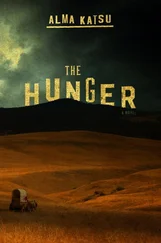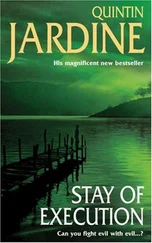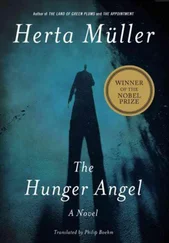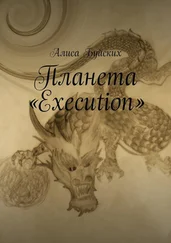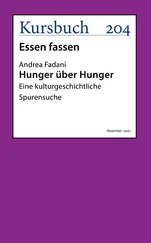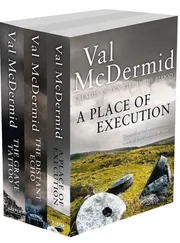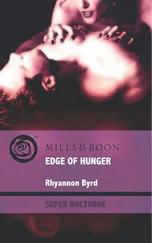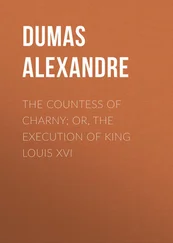Hunger accomplished everything that decrees and threats could not. The last reserves of precious metals, meager as they were, were pried or dug out from their hiding places. They became the only means of survival.
To own gold was now everybody’s dream; it became synonymous with life itself. Gold could buy bread…just imagine. Even we lowly villagers could buy bread, and plenty of it very easily if we only had that magic gold. But the question was how and where to get it? A few of us had some, but the majority had never even seen it.
As the news about this fabulous store spread, we began to hear horror stories about armed robberies and murders. Wearing gold jewelry openly, or having a gold tooth, was flirting with death. Murders committed for a pair of earrings, or a ring, or whatever else was made of gold or looked like gold, soon became everyday occurences. A girl lost her finger along with her ring when the robber who was unable to remove the gold ring simply cut off her finger. Thieves armed with tongs would forcibly extract the teeth from those who had gold crowns. These crimes had a tremendous demoralizing impact on our lives.
Gold fever resulted in the complete destruction of our cemetery. Our village was very old; its beginnings dated back to the sixteenth century. Through all those three centuries or more, our cemetery had been the burial place for people from all walks of life: the prominent and rich as well as the common farmer. It was the custom to bury the dead with all their personal possessions such as jewelry, weapons, and crosses. Now, the graves were opened and looted of all the valuables they contained. At first, the grave plundering took place secretly at night, but soon, it was done openly in broad daylight. There actually was no need of hiding this horrendous crime for the government did not mind the pillaging of graves. Nobody was ever punished for this crime as far as I know. The cemeteries, after all, were looked upon as a part of religious tradition, something the Communists were bent on destroying. So, like the church and the independent farmers, our cemetery had to go; grave robberies were officially ignored and tolerated, if not actually encouraged.
In many cases, the remains of the buried were desecrated after the graves had been dug up. One could see human skulls and bones scattered all over the cemetery, and the plots which once held them were torn up, leaving empty, gaping holes. Even the wooden crosses marking the graves were carried off and used as firewood.
The cemetery looting turned out to be of some use: the opened graves soon received new bodies; the victims of starvation. This was a bizarre stroke of good fortune, since the starving villagers did not have sufficient strength to dig new graves for their dead relatives and neighbors. Now they only had to drag their bodies to the cemetery and drop them into the looted open graves.
There were a few villagers who had some pieces of precious metal in hiding and could realize their dream of trading it for food. We happened to be among those lucky ones. One evening my mother revealed her secret to us: she had two gold medallions. They had been her parents’ presents to her when she was still single, some half century ago, or more than thirty years before the October Revolution. At that time, it was the fashion for young women to wear gold coins as medallions. Mother no longer wore her most precious possessions, but kept them well-hidden for a rainy day. Even her children, knew nothing of their existence. We were in the direst of straits. The famine by this time was reaching its height; we had to have some food if we were to stay alive. Mother asked us, as she always did in important matters, as to the best way, in our opinion, to utilize these medallions. We decided unanimously that we should take one of them to the closest Torgsin in the county capital. We agreed to make this trip as soon as possible, for the snow had not yet sealed off our village completely. Later on, the intensity of the winter elements would make it impossible for us to leave the village at all.
One morning in late January 1933, while it was still dark, Mother and I set out along the main street through the center of the village for the county town. We followed the street to the main road which led straight into the town.
It was a memorable trip. Soon the sun rose and started to shine in all its brilliance in the vast blue sky with the white snow cover reflecting its light. The landscape was very calm and silent. We met nothing that was alive: there were no birds, cats, or dogs; not even their traces in the snow signaling life. And we didn’t meet a single human being. I had the eerie sensation that we were indeed walking in the kingdom of death.
The only sign that people were still alive was the smoke rising from distant chimneys. However, not many houses showed this signal. The majority of them, buried in deep snow drifts, hid the horrible sight of their inhabitants suffering and dying from starvation.
Soon, however, as we slowly made our way through the snow toward the village center, graphic evidence of starvation became visible. We noticed a black object which, from afar, looked like a snow-covered tree stump. As we came near, however, we saw that it was the body of a dead man. Frozen limbs protruding from under the snow gave the body the appearance of some grotesque creature. I bent down and cleared the snow off the face. It was Ulas, our elderly neighbor whom we had last seen about a month ago.
A few steps further, we saw another frozen body. It was the corpse of a woman. As I brushed away the snow, horror made my blood turn cold: under her ragged coat, clutched tightly to her bosom with her stiff hands, was the frozen little body of her baby.
We finally left our village behind and stepped onto the open road which led to the county seat. However, another ghostly panorama now opened in front of us. Everywhere we looked dead and frozen bodies lay by the sides of the road. To our right were bodies of those villagers who apparently had tried to reach the town in search of work and food. Weakened by starvation, they were unable to make it and ended up lying or falling down by the roadside, never to rise again. The gentle snow mercifully covered their bodies with its white blanket.
One could easily imagine the fate of those people whose bodies were lying to our left. They most probably were returning from the county town, without having accomplished anything. They had tramped many kilometers in vain, only to be refused a job and a chance to stay alive. They were returning home empty-handed. Death caught up with them as they trudged homeward, resigned to dying in their village.
The wide open kolhosp fields, stretching for kilometers on both sides of the main road, looked like a battlefield after a great war. Littering the fields were the bodies of the starving farmers who had been combing the potato fields over and over again in the hope of finding at least a fragment of a potato that might have been overlooked or left over from the last harvest. They died where they collapsed in their endless search for food. Some of those frozen corpses must have been lying out there for months. Nobody seemed to be in a hurry to cart them away and bury them.
The actual seven miles’ distance to the town proved to be very laborious for us. After we left our village, a cold wind started blowing from the north, and clouds appeared on the horizon. It was difficult, especially for Mother, to walk against the wind, but we stubbornly persisted, and after about six hours of struggle with the wind and snow-covered road, we arrived at the entrance to the county town. Here yet another horror awaited us.
Our county seat at that time had no sewage system, and the raw sewage was collected, usually at night, by a special sanitary brigade. There was no special dumping ground for the cargo of the horse-drawn sewage tanks. They were usually emptied outside of town, along the sides of the roads. The road from our village to the county seat seemed to have been their favorite dumping ground; consequently, both sides of the road for a considerable stretch were thickly covered with raw sewage. This was in itself, a most distasteful sight and unpleasant in normal times, but we had become used to it. Now, as we slowly trudged along these littered roadsides, our stomachs turned over anew. Scattered here and there throughout the sewage were frozen corpses. They were lying singly or in groups, or just piled up one on top of another, like debris after a disaster. Some were covered with snow, showing only arms and legs protruding; others were covered by freshly dumped raw sewage. The infants were invariably pressed to their mothers’ bosoms under the cover of homemade coats.
Читать дальше

